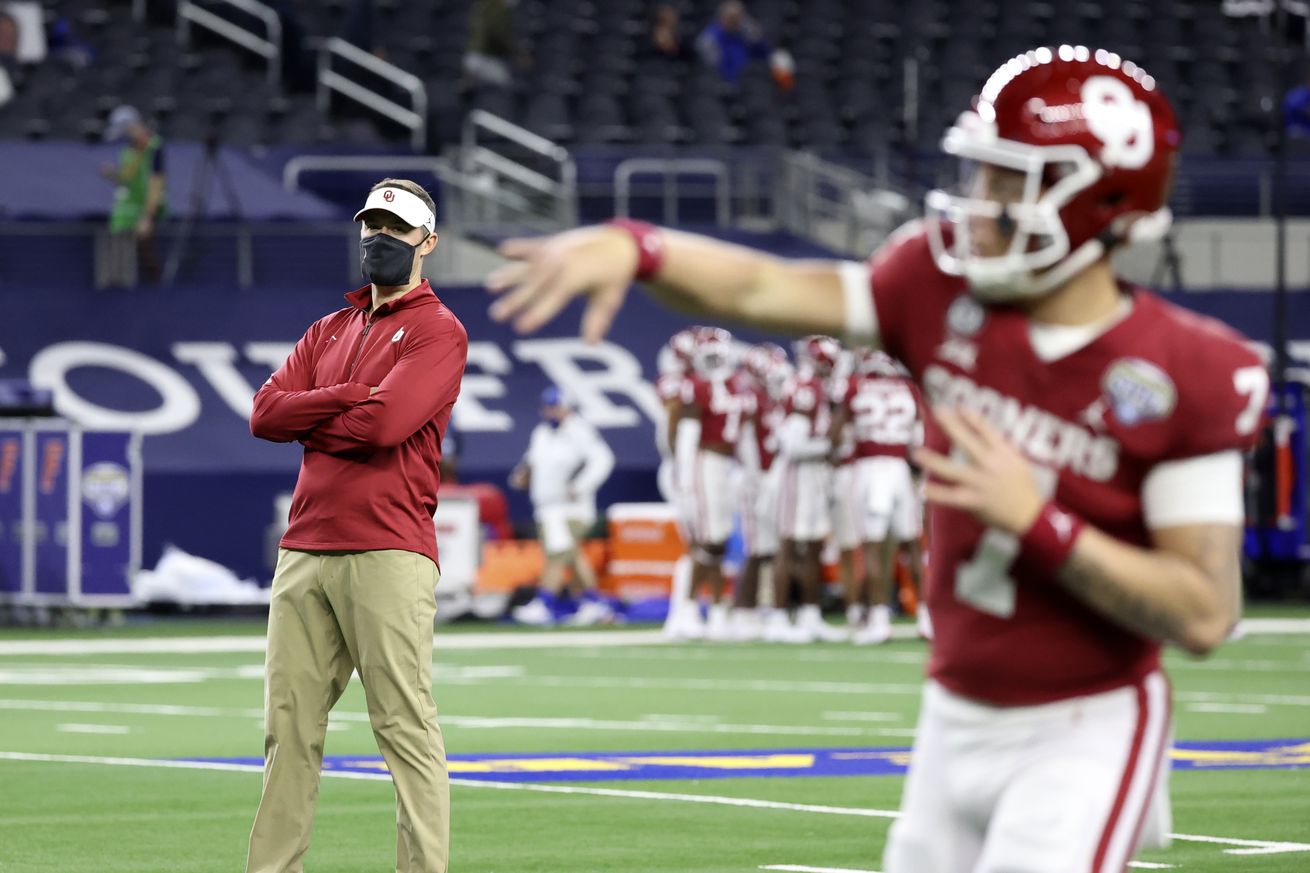
OU’s offense saw its conversion rate dip on third down in 2020.
Among many indicators of supreme offensive potency since Lincoln Riley arrived in Norman, the Oklahoma Sooners run very few plays on third down.
For example, despite playing 14 games in 2018, OU registered the lowest number of third-down snaps of any team in the country, 140. A year later, the Sooners were at 155 plays in 14 games on third down, seventh fewest overall nationally. In the weird Covid-19 season of 2020, OU had 135 third-down plays on offense in 11 contests, ticking up slightly from previous years to a rate of about 12.7 per game.
Factors such as pace of play, explosiveness and proclivity for turnovers can skew results, but running fewer plays on third down generally indicates a team is gaining so many yards on the first two plays of a series or that third down is unnecessary. For perspective, the ‘18 OU squad pumped out a staggering average of 8.5 yards per play on first down. When you have to gain two yards to convert on second down, the likelihood of needing a third or fourth snap to continue a drive falls dramatically.
But what about actually converting on third down? Although it’s not clear if that is a skill apart from offensive efficiency, it can dramatically affect the outcomes of games. The inability to turn third downs into firsts consistently last year put OU in some tight spots.
Historically, the national median for teams’ third-down conversion rate falls almost right on 40% every season. That includes all third downs – naturally, the conversion rates differ depending on distance.
In ‘18 and ‘19, the OU offense was ruthlessly effective on third down. The Sooners ranked fourth nationally in ‘18 with a conversion rate of 50.7%. OU didn’t drop off much the next year, gaining first downs on 49.7% of its attempts, the fifth-best in the entire country.
In ‘20, OU’s performance nosedived. The Sooners converted 40.7% of their third-down attempts, which put them 60th overall. What changed?
When running the ball on third down, OU was essentially just as effective in ‘20 as ‘19. Thirty-four percent of the team’s rushing attempts last year produced first downs versus 37% the year before that.
Throwing the ball was a different story. The Sooners’ conversion rate fell from 48.5% in ‘19 to 40.9% in ‘20. Importantly, OU’s completion percentage dipped from 63.6% to to 56.8% on third down.
Perhaps that speaks to efficiency issues at quarterback when moving from Jalen Hurts to Spencer Rattler. After all, we tend to think of stats like completion percentage as a reflection of a QB’s accuracy and decision-making.
What about the players catching the passes from the QBs, though? In fact, you could make a good case that the Sooners missed star wide receiver CeeDee Lamb more on those money downs between 2019 and 2020 than in any other facet of the game.
Of the 48 third-down completions that generated first downs in ‘19, Lamb accounted for nearly a fourth of them, 11. In the next season, thirty-six completions on third down produced first downs. The player who caught more of them than anyone else during the ‘20 season: Austin Stogner with seven. That would be the same tight end who missed the better part of five games.
None of that is to say that OU needs to find a new superstar among its current receiving corps. If a team has three or four good options, spreading the passes around in high-leverage situations works just as well as relying on one go-to receiver.
On the other hand, when you’re accustomed to having a CeeDee Lamb at your disposal, losing that kind of player forces teams to reorient how they operate. Plays that used to be reliable in key spots may not be so reliable anymore. If OU struggled with that kind of shift during a Covid-affected season, it seems understandable, especially when you consider the number of unproven players used in important roles.
Most of the key pieces of the OU offense return in 2021, however. That should put the Sooners in position to raise their proficiency when it comes to turning third downs into firsts.